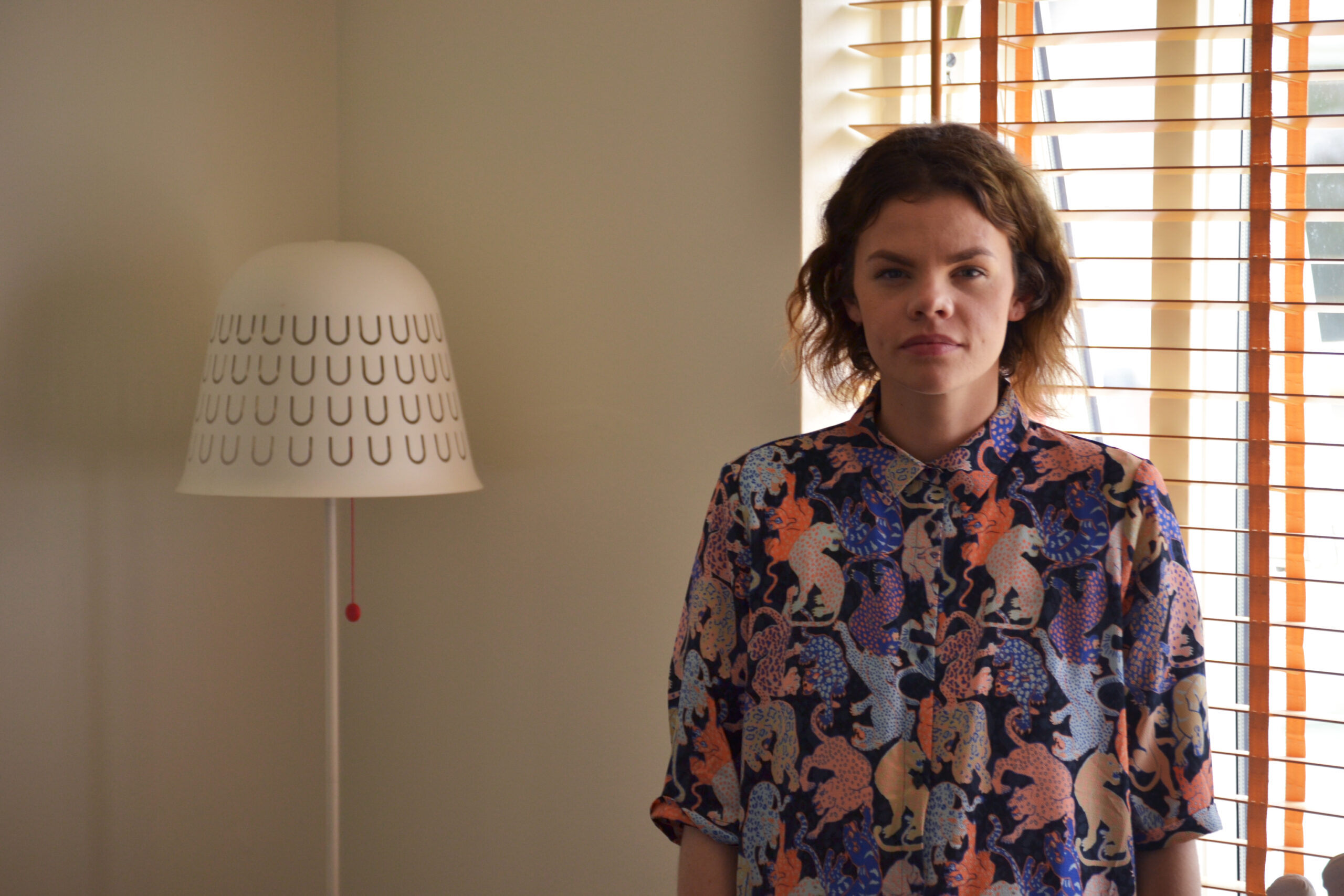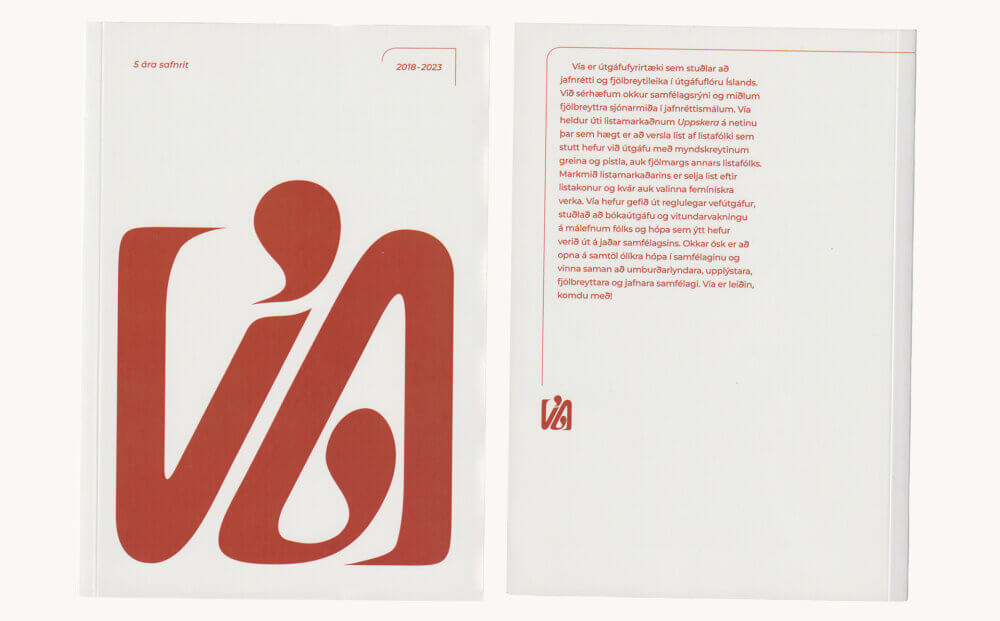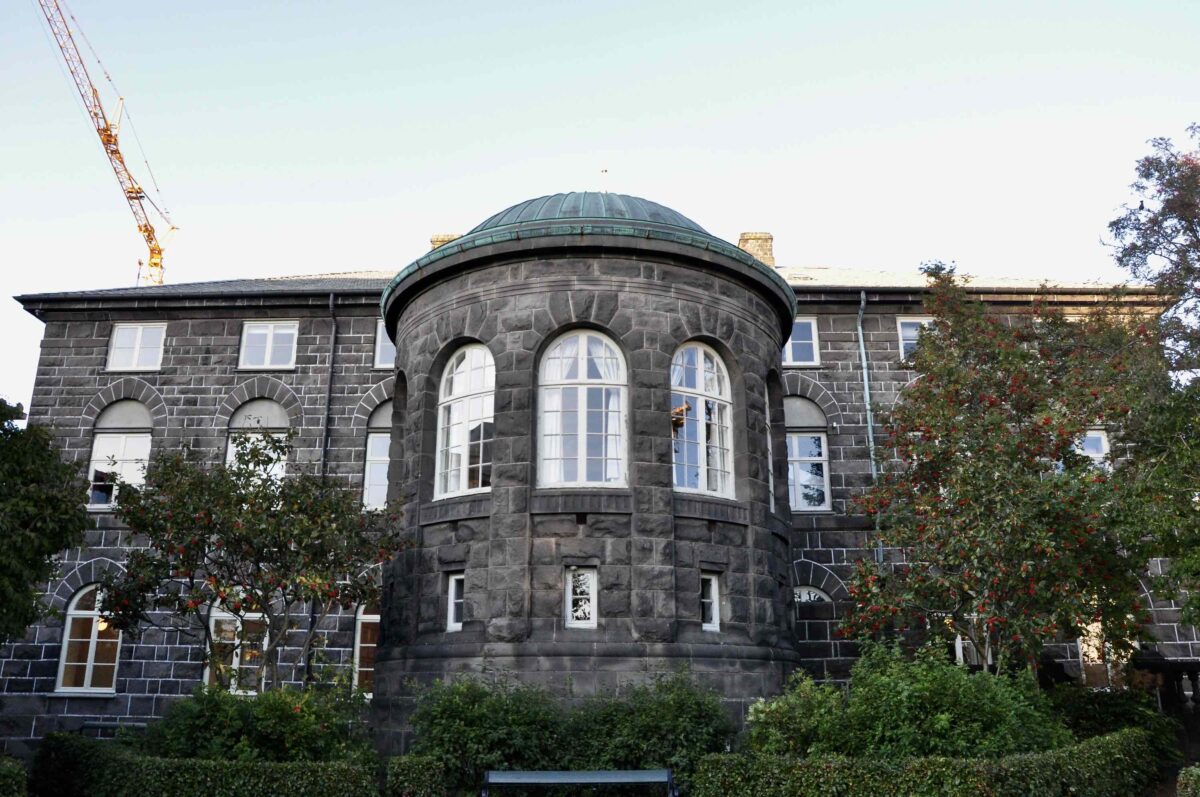“Woman at War” as a blueprint for social, political and environmental change
Höfundur:
Armando Garcia Teixeira
Myndahöfundur:
Ylfa Dögg Árnadóttir
@hrakfallabalkur
@ylfad
An interview with Halldóra Geirharðsdóttir
The text first appeared in the Student Paper 2021.
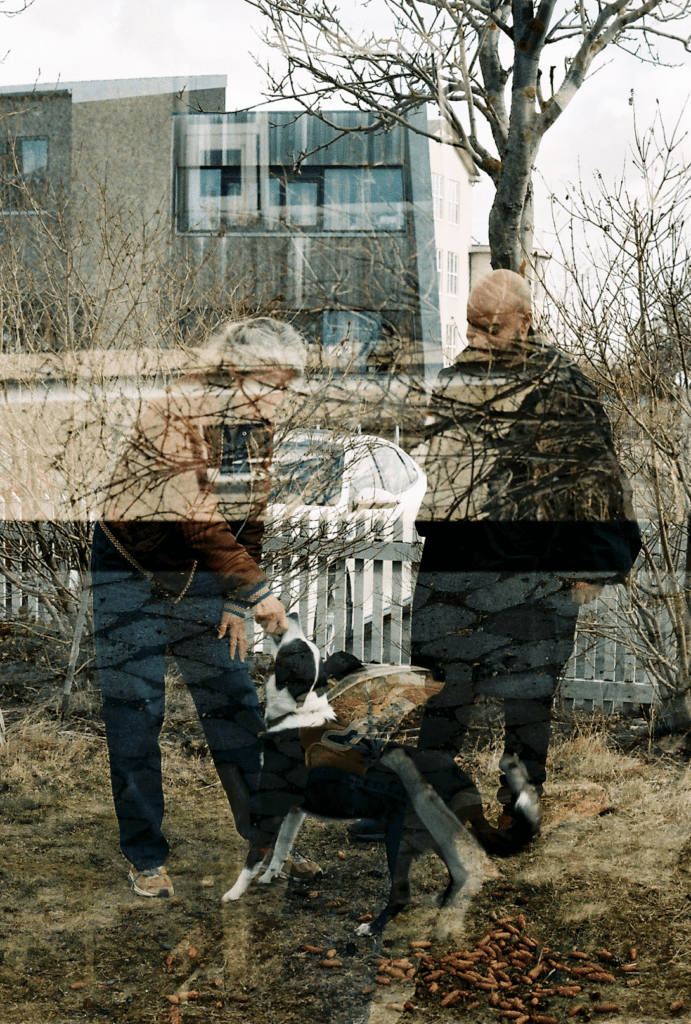
Throughout my classes this semester, we discussed the antagonisms in how we address pressing ecological issues. It made me think about Benedikt Erlingsson’s “Woman At War” (“Kona fer í stríð”). That film touched me in different ways. That is why I decided to interview Halldóra Geirharðsdóttir, the protagonist of the film. She played in remarkable films such as Devil’s Island (Djöflaeyjan), Angels of the Universe (Englar alheimsins), Of Horses and Men (Hross í oss), and Metalhead (Málmhaus). I have admired her work since my teenage years, was starstruck and blinded by her irradiant light. She is kind, down-to-earth, and was a punk rocker too. She plays the saxophone under the artist name Dóra Wonder which she has used since her teens after seeing a cover of Wonder Woman breaking through her Cheerio cereal box. She is also a professor in the Department of Performance Art at the University of Iceland.
“I love doing films,” says Halldóra. “Sometimes I am afraid the audience gets tired of me, so I welcome different challenges, this way I feel that I can still surprise my audience later.”
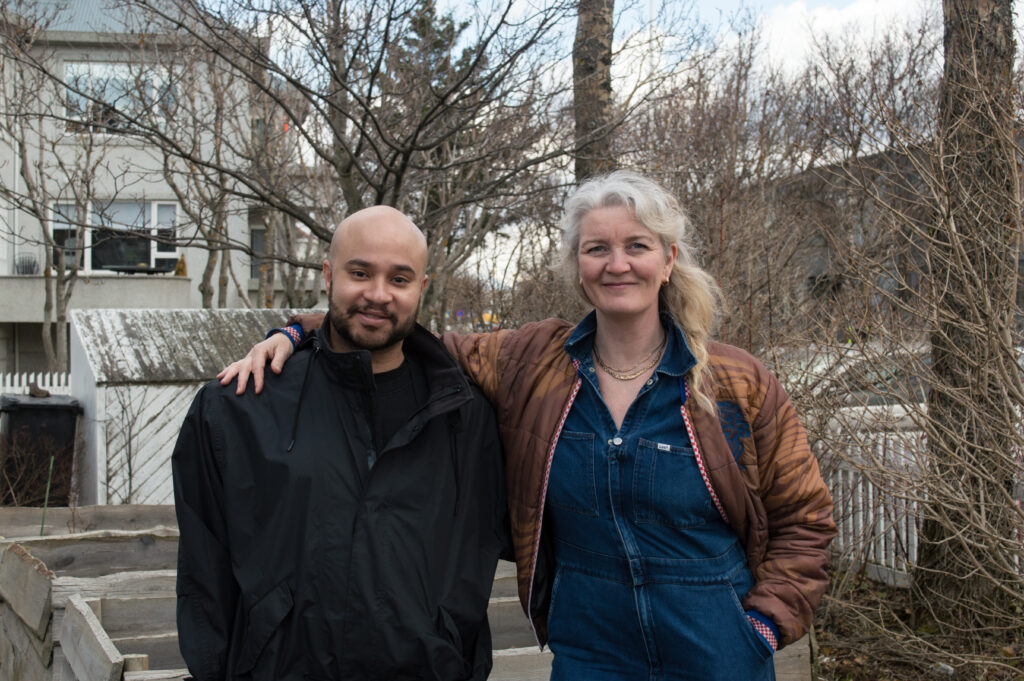
Woman at war: The film’s story
Halldóra won for her performance in Woman At War, Best Actress from the Chlotrudis Society for Independent Film in 2020, Actress of the Year from Edda Awards in 2018 and nominated as best actress for the European Film Awards.
Woman at War is Halldóra’s first starring role, and it’s well-deserved. “It is my favorite [role], the first time where I get a part and hold the tension throughout the whole film. There were no parts for women of my age in Iceland. I have done very small parts before,” says Halldóra. This article contains spoilers.
Halldóra plays twins Halla (The Mountain Woman) and Ása. Both required distinct preparation, as she explains: “…to prepare for this film, I met with yoga teacher Kristbjörg Kristmundsdóttir.” The sisters’ dynamic in the film involves two different energies familiar to yoga practitioners: “Halla is the embodiment of rajas energy, representing movement, passion, and desire,” she explains. Halldóra’s exemplary physical performance running through the Icelandic landscapes attests to that. She is a saboteur who takes it upon herself to fight for change by undermining the operations of an aluminum factory in Iceland. Ása, on the other hand, represents sattva, the energy of balance, and believes in bringing about peace through small acts of kindness. In the film, Ása goes into the jail to visit Halla and swap places, “so she can go meditate for the sake of earth while her sister goes to save a child.“ Sometimes “to do good also [requires] to be very peaceful.”
Halldóra sees a similarity in the COVID-troika, Alma Möller head of DoH, Þórólfur Guðnason Chief Epidemiologist and Chief Superintendent of the NCIP, Víðir Reynisson: “They are very peaceful, [coming from a] highly educated viewpoint trying to look at many aspects, I think they are being not only clever but very wholesome. I personally identify with sattva, me as a teenegar would have preferred the raja energy.“
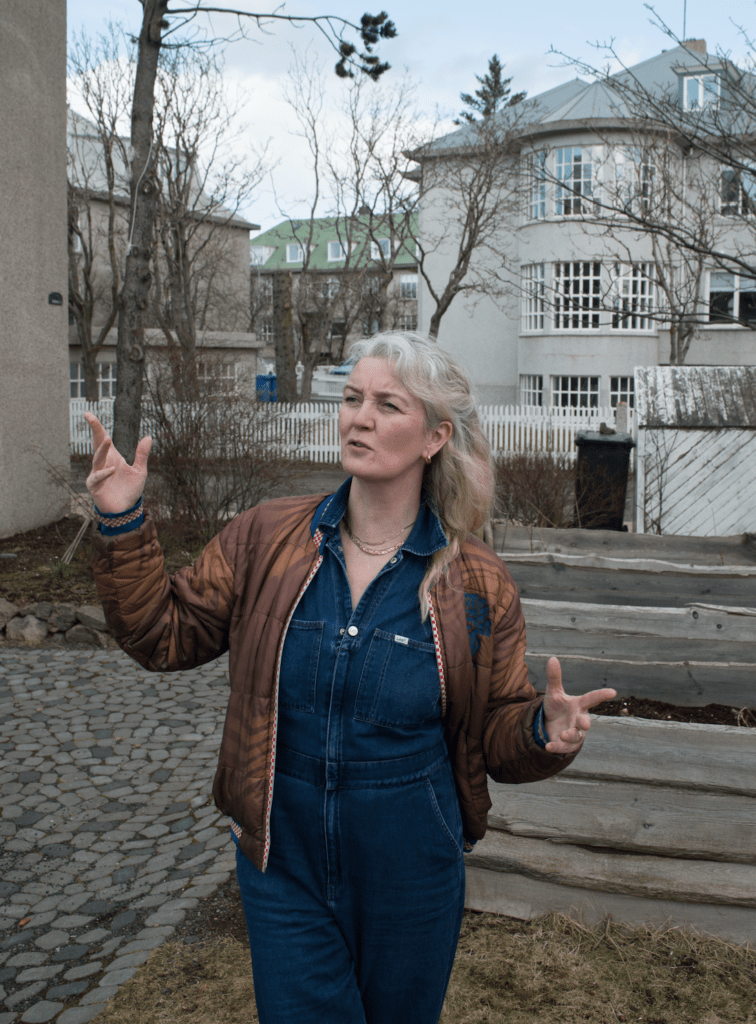
Systematic or Individual Change
Halldóra asks me if I will become an Icelander, which gives me flashbacks of my journey up until this very moment with her. There is a part of me that refused to accept oppression and inequality. Growing up in São Paulo in a lower-middle-class family, attending classes in a dangerous school, I became aware of economic and social injustices. I did what I could to steer away from trouble. I used to meditate, something Ása would do. Later in life, I attended workshops on the rights of former Yugoslav workers in Slovenia and visited the Roma communities in Slovakia, where I lived in order to make ends meet. As an immigrant for 14 years, there were limits to what I could or couldn’t do. In the world’s eyes, non-EU immigrants are not “expats” and do not “relocate”. These terms come from the vocabulary of power – something I think Halla would understand.
Paradoxically, the director had similar dreams of being an activist, and found other ways to channelize this energy: “He’s a father, and could not risk being put in jail, so he made a film to give ideas to young activists”.
Halla follows a similar path. After having the entire state apparatus in her pursuit, she escapes thanks to her twin sister changing places with her in jail. In the midst of all, her application for adoption is granted, and she goes to Ukraine to rescue a little girl, and become a mother. She is a heroine in many frontiers. As a fostered child I relate to her commitment to love, protect and raise the little girl as her own.
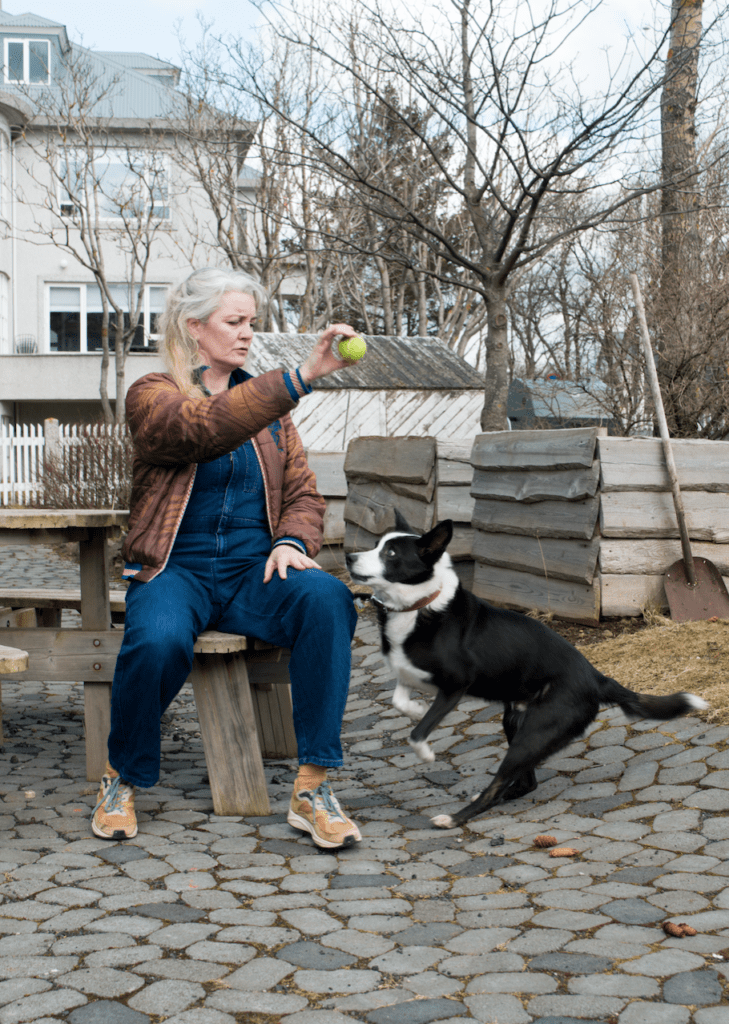
The Foreigner, Icelandic society and representations of the Other
Halla’s Ukrainian foster child took Halldóra and I to a discussion on Icelanders with foreign background which she recalls in her younger years used to be called “Nýbúi” (New-in-town):
“I have a Dutch grandma who came to Iceland when she was in University, studied Icelandic herbs, worked on a farm, and fell in love with a handsome 21-year old worker in that farm. The day she was 21, she bought a boat ticket to Iceland, and married him. My husband has an Icelandic mother and a French father. I’ve never doubted they are Icelandic but they are also something more.” She goes on, “I would not be here [without this interconnectedness].” We deviated from our main theme a bit, and then discussed the story of Hans Jonatan [1784-1827], the first account of an Icelander of color. “I believe our former prime-minister Davíð Oddsson is related to him many generations back.”
In Woman at War, there is another rich portrayal of a foreigner. The ill-starred Spanish tourist in the wrong place at the wrong time serves as comic relief by repeatedly being dragged into Halla’s transgression and raising authorities’ suspicion.
I remind her of a passage in Trapped 2, a series she also plays a role. In one scene, the policewoman (played by Ilmur Kristjánsdóttir) questions the reasoning of a fictional ecofascist terrorist group named Hammer of Thor: “Aren’t all sagas about immigrants?” On this, Halldóra adds: “Exactly. What is nationality? I could say I am an Icelander, because when the earthquakes come I get very relaxed, nature is talking to me. Then I have this friend, Icelandic as anybody, and she is absolutely terrified. So there is nothing Icelandic about my reaction, it is just me.”
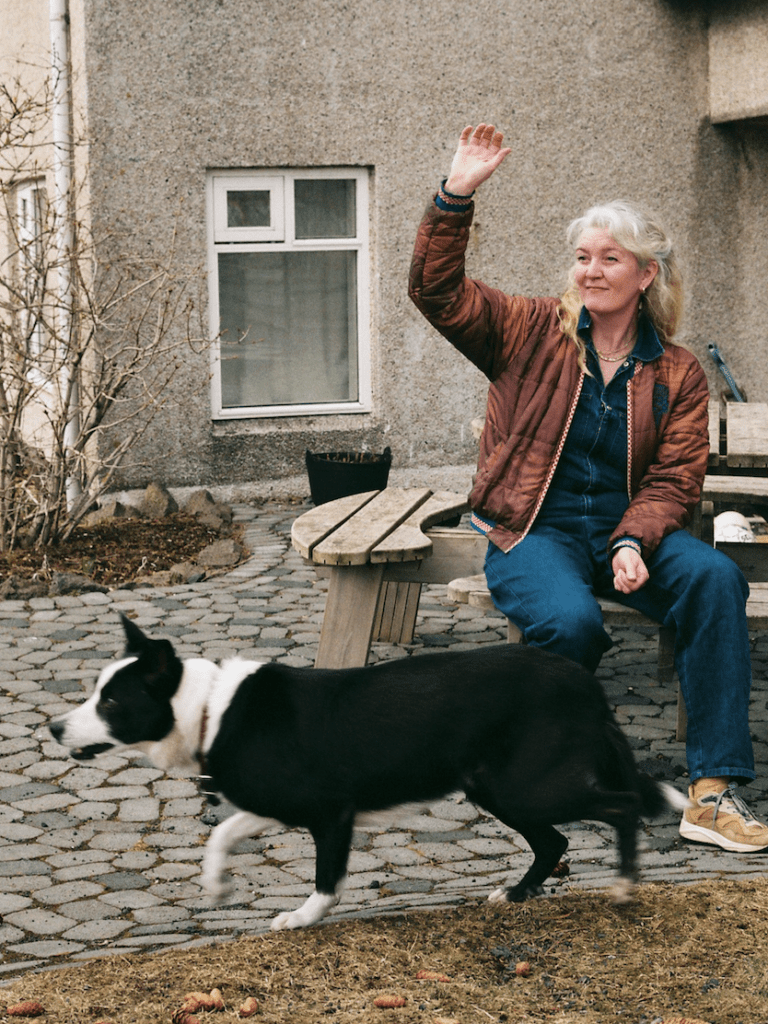
“Nation is just an agreement on taxes (…) Culture is creativity”
“[Let’s say], am I less Icelandic because I speak with an accent or because I don’t speak Icelandic? Being Icelandic is just in which system I have decided to pay my taxes. My nationality is where I work, live and raise my children. Nation is just an agreement on taxes but you can’t control culture. Culture is creativity”, says Halldóra.
Halldóra tells me that the name Halla was not chosen only by chance. “Halla is the name of one of our most famous outlaws [from the story of Fjalla-Eyvindur] in the highlands of Iceland.”
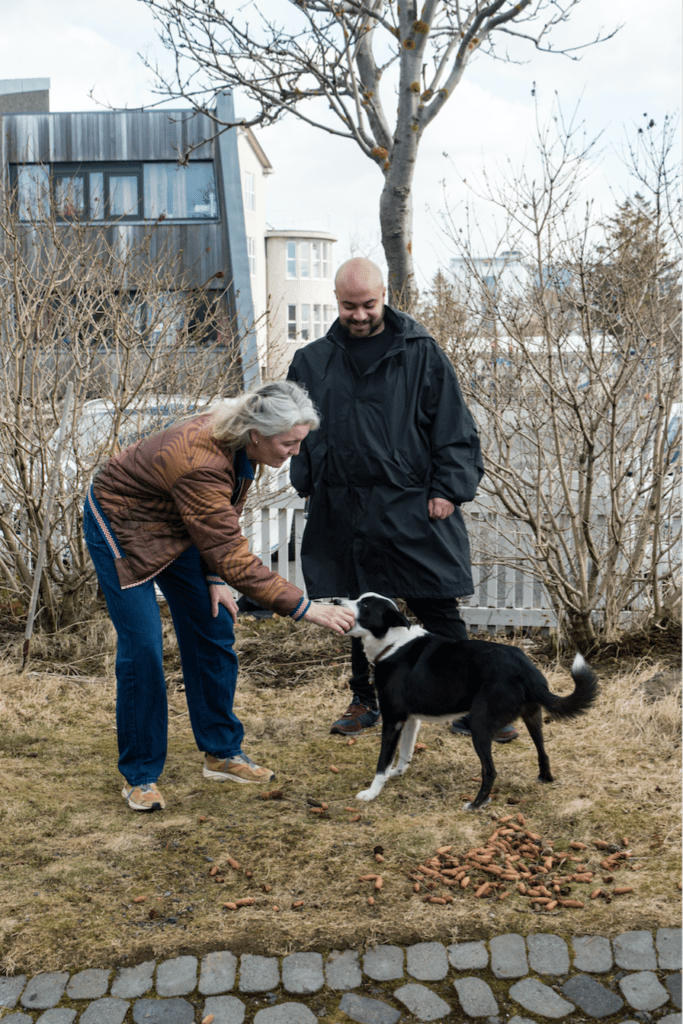
The Lady of the Mountain and her small interventions
In Woman at War, the activist Halla is referred to as Fjallkonan, which means “Lady of the mountain”. This alludes to the personification of the Icelandic nation as a woman referenced in literary works and paintings from the 19th century. I would like to explore one specific scene where the symbolic reference to the lady of the mountain becomes clear.
During a walk in Þingvellir, the president, played by Jón Gnarr, presents the country to a group of investors. He describes the location and its historical significance in a comic way, as a “ring of power, like in The Lord of the Rings.” Meanwhile, politicians are receiving phone notifications that Halla has gone into action again. The scene depicts the political establishment, represented by politicians and technocrats, forming an “ancient circle” like in the “old days” to discuss how to put a stop to Halla’s acts of sabotage. Þingvellir was the original birthplace of the Alþingi (the national parliament of Iceland), which is considered the first parliament in modern history; thus, the symbolic relevance of the scene. The fjallkonan, then, the embodiment of the Icelandic nation, descends from the mountains to rescue her land, disrupts “business as usual,” and compels the establishment to react.
“It was very clear for [the director] that [society] needs a greater change, but he wanted to see how one woman could go about doing it all by herself. Money has to understand that Iceland is unstable.” Halla’s small but radical interventions “were making Iceland into an unstable place to buy electricity,” says Halldóra.
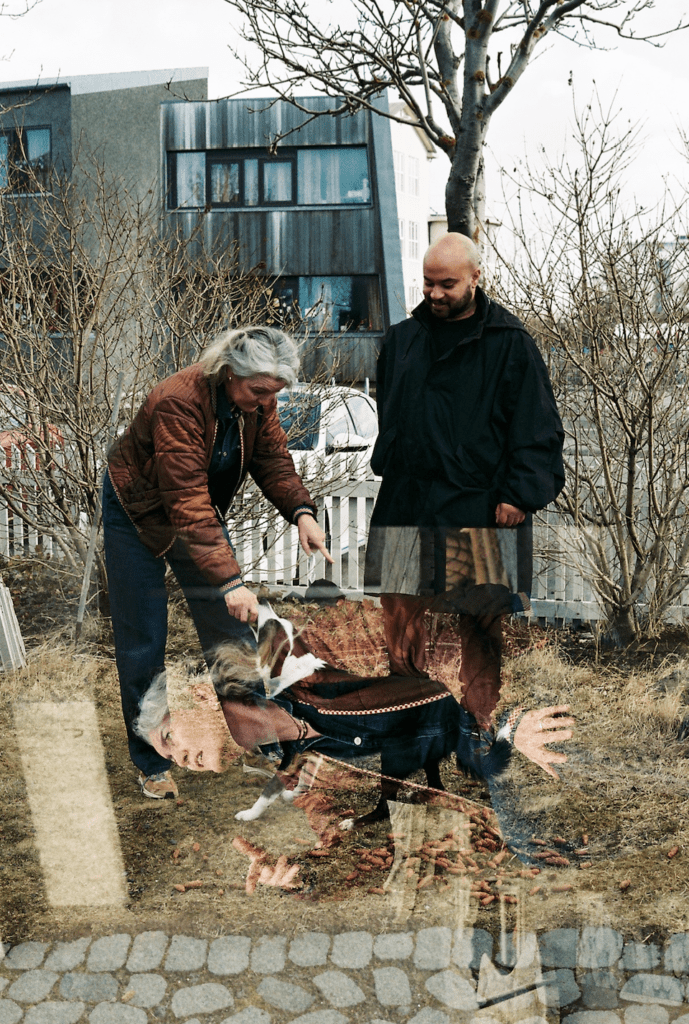
The film’s aftermath
Interestingly, the reception of the Woman at War was stronger abroad than Iceland. Halldóra suspects that the complexity, abundant action, and various themes they tried to convey partially explain the difference. Woman at War is a call for action and exposes the conniving ways we as a society contribute to the ecological, social and political issues we claim to fight for. And, if one engages in acts of resistance the State is prepared to unleash unimaginable displays of power and control.
The dichotomy between Halla and Ása, underlines two distinct reactions to what has been known as climate anxiety, a symptom of an age when sustainability is the dominant discourse. The great challenges of the 21st century were internalized by the individual spurring different coping mechanisms. The story of the sisters could be as well the story of one individual. Either through activism or confinement, and meditation both Halla and Ása aimed at contributing for the common good. And isn’t Ása’s symbolic act of confinement analogous to the selfless sacrifices we were asked to perform during the COVID-19 crisis? I think so.
This article was my first attempt to engage with the film “Woman At War” and I intend to further explore its inherent potential as an educational resource on sustainability, and citizenship education. Therefore I chose the following remarks from Halldora to conclude this piece:
“My children were teens when they saw the film, and they had so many questions on environmental activism, and ethics, about being a human being on this planet. It was educationally very strong. [Perhaps if] more people had gone to see it [in Iceland], then it would have had a better effect in [Icelandic] society. [Maybe] we should have allowed the film to flow in more sattva [energy-like]. [But] after it was sold to the Icelandic television, I received many positive responses from people in different parts of Iceland.”
It strikes me as odd the way we are familiar with movie narratives of ecological disaster and environmental devastation such as Waterworld, Blade Runner 2049, The Day After Tomorrow, Mad Max: Fury Road or Interstellar. But when it comes to a contemporary picture depicting a specific problem, its root cause, and a single individual outlining the path towards change, Woman at War is a standalone film and deserves more recognition.
It could be that the moment in time when the Woman at War was released did not allow for greater popularity. However, I think the aspects of the film Halldóra and I discussed make it timeless and it will become a true Icelandic and international classic on social, political, and environmental change.
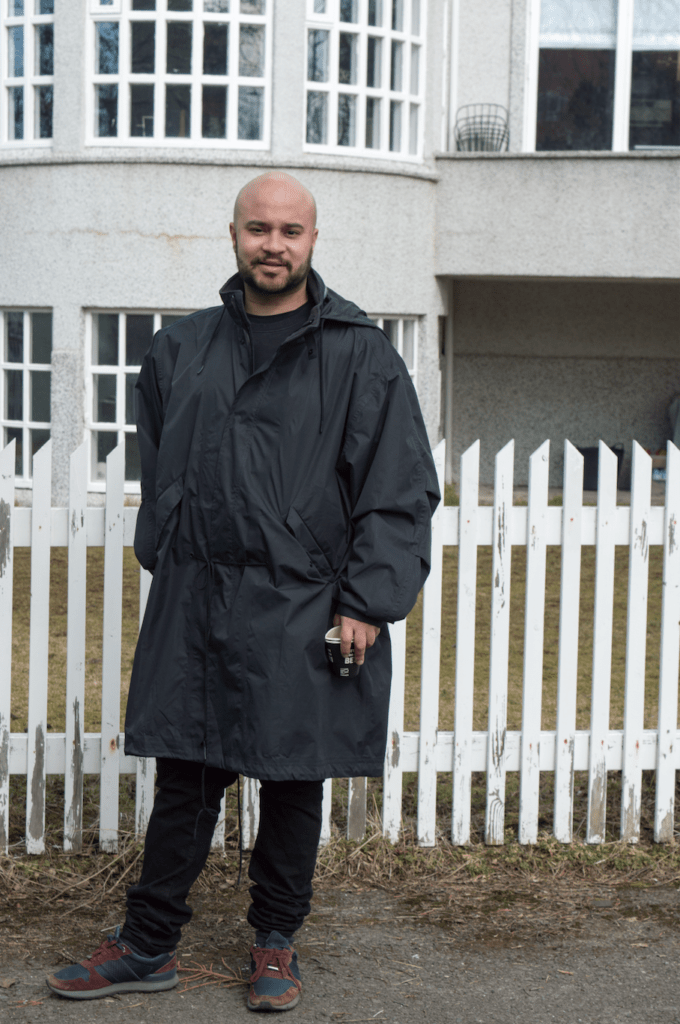
— — —
Armando Garcia Teixeira is a graduate student in the MA program International Studies in Education at the University of Iceland. He holds a BA in Political Science from the University of Ljubljana and has worked on EU-funded projects related to immigrant concerns. He is a contributor at Stúdentablaðið, and a student representative on the curriculum committee of the Department of International Studies (DISE) of the School of Education. He is particularly interested in the intersectional aspects of educational theory, poststructuralism, postcolonialism, cultural anthropology and political philosophy. He likes Lego and loves social justice.
Read more about...
